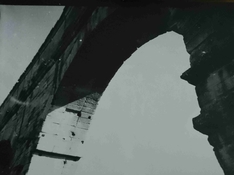Hello everyone,
I’m reaching out to see if anyone has insight into an issue I’m facing. Every time I enlarge and print photos from certain film negatives, I notice consistent white specks or spots appearing across the images. While the spot locations and intensity vary across different negatives, for the same negative, the spots always appear in the exact same places and with the same intensity on each print.
I've double-checked my negatives, and they appear clean to the naked eye. I’m wondering if it could be something with my equipment, or maybe the negatives themselves. Maybe it is dust on the negatives that don't appear to the naked eye ?
I'm attaching an example image to illustrate what I mean (not a high quality scan - just took a photo of the print with my phone). Any advice or suggestions on what might be causing this and how to resolve it would be greatly appreciated!
If you suspect it is the negatives - how is it best to clean them and remove these specks ? How can I help prevent these specks from appearing in the first place ?
Thanks so much in advance for any help!
I’m reaching out to see if anyone has insight into an issue I’m facing. Every time I enlarge and print photos from certain film negatives, I notice consistent white specks or spots appearing across the images. While the spot locations and intensity vary across different negatives, for the same negative, the spots always appear in the exact same places and with the same intensity on each print.
I've double-checked my negatives, and they appear clean to the naked eye. I’m wondering if it could be something with my equipment, or maybe the negatives themselves. Maybe it is dust on the negatives that don't appear to the naked eye ?
I'm attaching an example image to illustrate what I mean (not a high quality scan - just took a photo of the print with my phone). Any advice or suggestions on what might be causing this and how to resolve it would be greatly appreciated!
If you suspect it is the negatives - how is it best to clean them and remove these specks ? How can I help prevent these specks from appearing in the first place ?
Thanks so much in advance for any help!
Attachments
Last edited:



